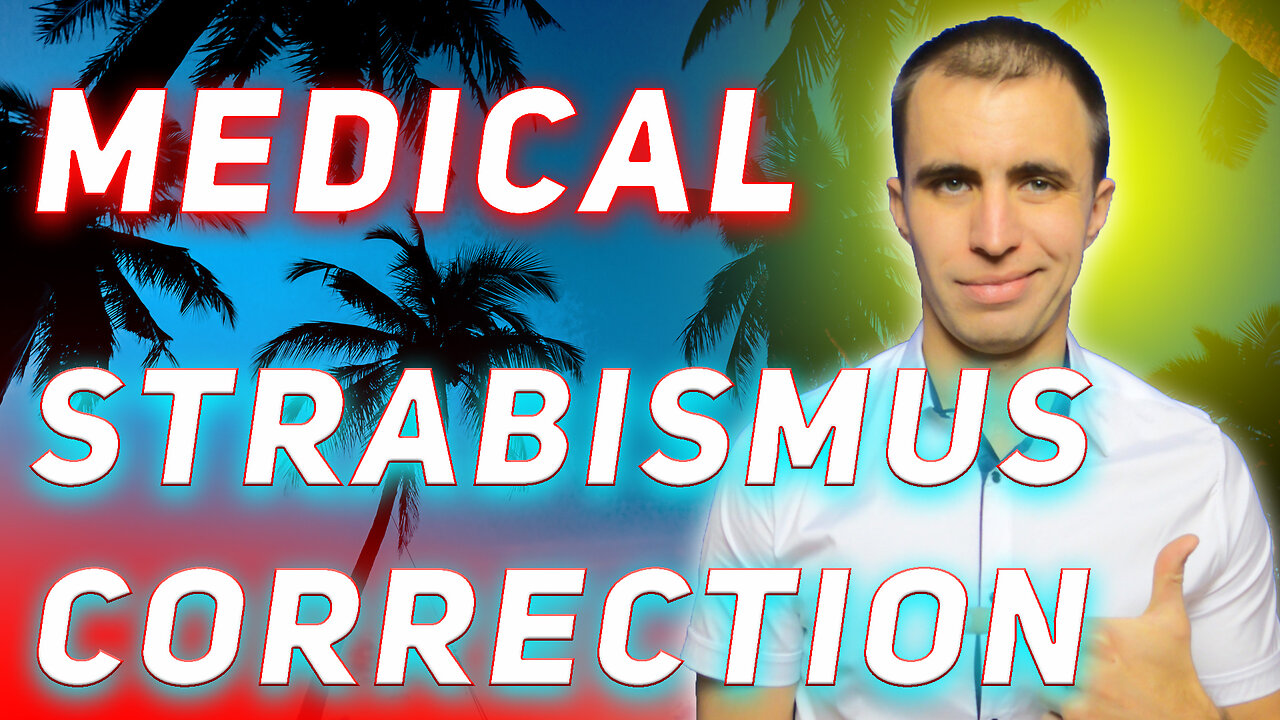Premium Only Content

Medical Strabismus Correction: Top 2 Methods
Strabismus, commonly known as crossed eyes, is a condition characterized by the misalignment of the eyes, where they do not look at the same point at the same time. This condition can affect individuals of all ages and can lead to visual impairment if not properly addressed. Over the years, medical science has developed several effective methods for correcting strabismus, each with its own set of advantages. In this article, we'll delve into the top two medical methods for correcting strabismus: surgical intervention and vision therapy.
1. Surgical Intervention
Surgery is often considered one of the most direct and effective methods for correcting strabismus. The procedure typically involves adjusting the muscles around the eyes to ensure proper alignment. Here's what you need to know about strabismus surgery:
Procedure: Strabismus surgery involves making a small incision in the tissue covering the eye to reach the eye muscles. The surgeon then either strengthens or weakens the relevant muscles to adjust the eye's alignment. This may involve repositioning the muscle, removing a section of the muscle, or altering the muscle's attachment point.
Recovery: Patients usually recover quickly from strabismus surgery, with many returning to their normal activities within a few days. However, complete healing and stabilization of eye alignment might take several weeks.
Efficacy: Surgical correction is highly effective for many forms of strabismus, with a significant number of patients achieving improved eye alignment. Success rates vary depending on the specific type of strabismus and the patient's condition before surgery.
2. Vision Therapy
Vision therapy is a non-surgical approach to treating strabismus that focuses on improving the coordination between the eyes and the brain. It involves a series of personalized exercises designed to correct the misalignment. Here's what makes vision therapy a top method:
Approach: Vision therapy uses a variety of exercises tailored to the individual's needs, including the use of lenses, prisms, filters, and computer-assisted visual activities. These exercises help strengthen the eye muscles, improve focus, and enhance visual processing capabilities.
Duration and Frequency: The therapy typically involves weekly sessions with a trained therapist, accompanied by daily exercises to be practiced at home. The duration of the therapy can vary widely, often lasting several months to achieve the desired results.
Effectiveness: Vision therapy has proven effective for certain types of strabismus, especially in cases where the condition is caused by poor eye muscle coordination rather than a structural problem with the muscles themselves. It is particularly beneficial for patients who seek an alternative to surgery or for those whose condition may not be fully resolved through surgical means.
Conclusion
Strabismus correction is crucial for improving visual function and quality of life. Both surgical intervention and vision therapy stand out as the top methods for treating strabismus, each offering a different approach to address the condition. The choice between surgery and vision therapy depends on the specific type of strabismus, the severity of the condition, the patient's age, and personal preferences. Consulting with a specialized ophthalmologist or optometrist is essential to determine the most appropriate treatment plan tailored to the individual's needs.
-
 3:45:08
3:45:08
DLDAfterDark
11 hours ago $12.91 earnedDLD Live! SHTF Handguns! Which Would You Choose?
57.3K4 -
 1:50:38
1:50:38
Mally_Mouse
13 hours agoSaturday Shenanigans!! - Let's Play: Mario Party Jamboree
65.9K -
 1:13:00
1:13:00
Patriots With Grit
17 hours agoWill Americans Rise Up? | Jeff Calhoun
54.9K14 -
 14:55
14:55
Exploring With Nug
17 hours ago $12.79 earnedWe Found Semi Truck Containers While Searching for Missing Man!
75K16 -
 27:57
27:57
MYLUNCHBREAK CHANNEL PAGE
1 day agoOff Limits to the Public - Pt 3
164K73 -
 38:07
38:07
Michael Franzese
18 hours agoLeaving Organized Crime and Uncovering Mob in Politics: Tudor Dixon and Michael Franzese
124K15 -
 2:42:54
2:42:54
Jewels Jones Live ®
2 days agoAMERICA IS BACK | A Political Rendezvous - Ep. 111
96.3K50 -
 8:47:33
8:47:33
Due Dissidence
1 day agoLIVE: Workers Strike Back Conference ft. Chris Hedges, Jill Stein, Kshama Sawant, and More!
130K92 -
 8:36:37
8:36:37
Right Side Broadcasting Network
5 days agoLIVE REPLAY: CPAC 2025 Day Three with President Donald J. Trump - 2/22/25
485K104 -
 1:05:34
1:05:34
The Big Mig™
1 day agoConfirmed Kash Patel New FBI Director, Bring On The Pain |EP483
117K32